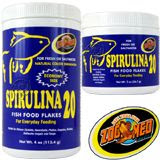Freshwater Spirulina
Freshwater Spirulina (fusiformis)
This post is extracted from the Yahoo Groups: Spirulina-Group and is in the format of question and answers.
QUESTION:
I am looking for a fresh water Spirulina variant (Spirulina fusiformis). My aquaponics setup is strictly fresh water. I grow freshwater algae. I want to start growing Spirulina: Spirulina is the most balanced algae. I am trying to create a balanced algae diet for freshwater prawns, freshwater mussels, and fresh water tilappia. If there is not a freshwater Spirulina variant, then I need to find out how to incorporate the Spirulina into my system. I use the animal affluent to feed the algae. The algae filters, and cleans the affluent water. The cleaned water is then recycled back into the tanks. The animals eat the algae infused water. Right now, the alga is not a complete balanced algae feed. I would like to combine several algae and create a balanced live algae food.
I have seen on the internet that marine Spirulina contains much more nutrients than the fresh water variant. Is this true?
ANSWER:
To date there is no any variant of Spirulina which grows in fresh water or in neutral pH, all strains need the high pH and I think the high pH is not suitable for your aquaponics setup. You should grow the Spirulina in different tank (with correct chemistry, lighting, etc. for Spirulina growth) and then after harvesting, you can add it as a feed in the form of powder/ granules. Moreover, if you are looking for a fresh water nutritious algae then you can try the chlorella or nannochloropsis etc. green algae.
As well, there is not any significant variation in the marine and fresh water Spirulina strain.
"True" Spirulina needs such alkaline conditions other such aquatic life is inhibited. That is why it can be mass cultivated with minimal contamination.
Your best approach may be a polyculture of the afore mentioned chlorella, nannochloropis. Try adding also some nannochloris and diatoms, as many varieties as you can find. Without even trying you are likely going to get some other "wild" algae. Just watch out for potentially toxic algae which can easily foul your system.
Please see this article for further information about the use of Spirulina in aquariums/aquaculture:
Spirulina Algae; The Aquatic/Aquaculture Health Benefits for Tropical, Marine and Goldfish
This post is extracted from the Yahoo Groups: Spirulina-Group and is in the format of question and answers.
QUESTION:
I am looking for a fresh water Spirulina variant (Spirulina fusiformis). My aquaponics setup is strictly fresh water. I grow freshwater algae. I want to start growing Spirulina: Spirulina is the most balanced algae. I am trying to create a balanced algae diet for freshwater prawns, freshwater mussels, and fresh water tilappia. If there is not a freshwater Spirulina variant, then I need to find out how to incorporate the Spirulina into my system. I use the animal affluent to feed the algae. The algae filters, and cleans the affluent water. The cleaned water is then recycled back into the tanks. The animals eat the algae infused water. Right now, the alga is not a complete balanced algae feed. I would like to combine several algae and create a balanced live algae food.
I have seen on the internet that marine Spirulina contains much more nutrients than the fresh water variant. Is this true?
ANSWER:
To date there is no any variant of Spirulina which grows in fresh water or in neutral pH, all strains need the high pH and I think the high pH is not suitable for your aquaponics setup. You should grow the Spirulina in different tank (with correct chemistry, lighting, etc. for Spirulina growth) and then after harvesting, you can add it as a feed in the form of powder/ granules. Moreover, if you are looking for a fresh water nutritious algae then you can try the chlorella or nannochloropsis etc. green algae.
As well, there is not any significant variation in the marine and fresh water Spirulina strain.
"True" Spirulina needs such alkaline conditions other such aquatic life is inhibited. That is why it can be mass cultivated with minimal contamination.
Your best approach may be a polyculture of the afore mentioned chlorella, nannochloropis. Try adding also some nannochloris and diatoms, as many varieties as you can find. Without even trying you are likely going to get some other "wild" algae. Just watch out for potentially toxic algae which can easily foul your system.
Please see this article for further information about the use of Spirulina in aquariums/aquaculture:
Spirulina Algae; The Aquatic/Aquaculture Health Benefits for Tropical, Marine and Goldfish
Labels: algae, cleaned water, fish diet, Fish Food, freshwater, fusiformis, goldfish, live algae, marine, prawns, Spirulina, tilappia





 Spirulina 20 Fish Food Flake
Spirulina 20 Fish Food Flake Aquarium Sponge Filters
Aquarium Sponge Filters Freshwater Aquarium Basics;
Freshwater Aquarium Basics; Saltwater Aquarium Basics: Information & Resources
Saltwater Aquarium Basics: Information & Resources